Silky hair is not just about looking good; it has a profound impact on how we feel about ourselves. It goes beyond superficial aesthetics and plays a crucial role in our overall appearance, self-esteem, and confidence. When your hair is silky, it becomes a stunning reflection of light, resulting in a healthy sheen that enhances your natural beauty. The smooth texture of silky hair also makes it much easier to style and maintain on a daily basis, saving you time and effort. Get ready to unlock the secrets to silky hair and experience the joy of effortlessly beautiful locks!
Understanding your hair type
When it comes to hair, we all have different types that require unique care and attention. Understanding your hair type is the first step towards achieving silky locks. Let’s explore the various hair types and the challenges they present:
- Straight Hair: This hair type is characterized by a smooth and sleek texture. It tends to be naturally shiny but can be prone to appearing flat or lacking volume.
- Wavy Hair: Wavy hair has a beautiful texture that falls somewhere between straight and curly. It can be versatile but may struggle with frizz and maintaining defined waves.
- Curly Hair: Curly hair is characterized by well-defined curls that range from loose to tight. It often requires extra moisture and care to prevent frizz and maintain shape.
- Coily Hair: Coily hair has tightly coiled or kinky curls. It is prone to dryness and requires ample moisture and gentle handling to prevent breakage and maintain its natural pattern.
Identifying your hair type is essential as it helps you tailor your hair care routine and select the most suitable products and techniques. Embrace the uniqueness of your hair type, understand its challenges, and discover the secrets to nurturing and enhancing its natural beauty.
Creating a Hair Care Routine
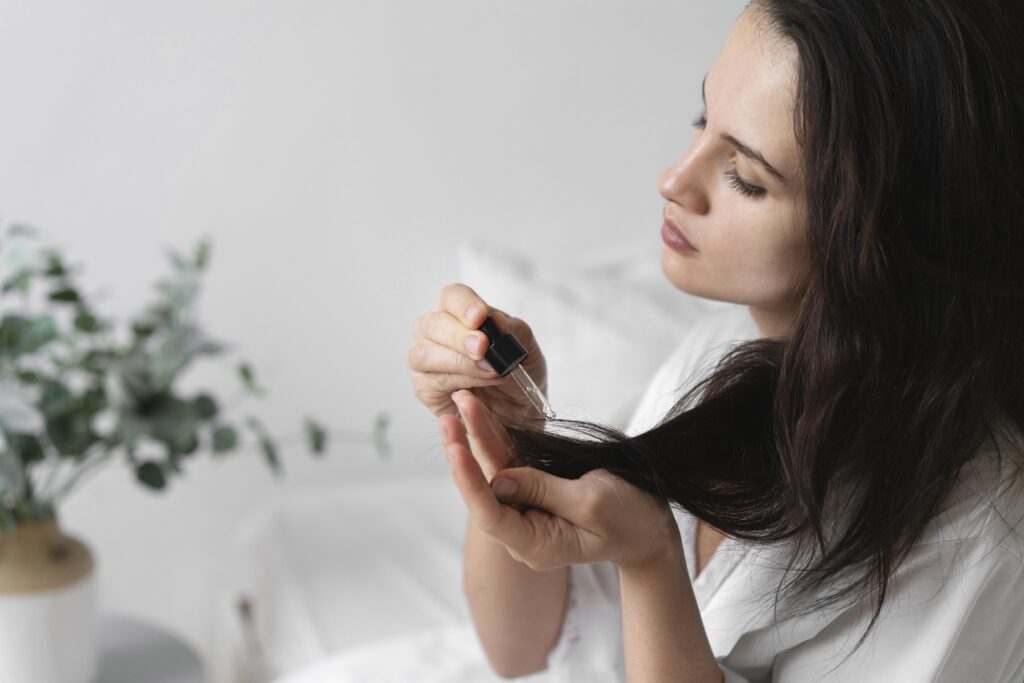
Maintaining silky hair requires a consistent and effective hair care routine. Let’s explore the essential practices and treatments to incorporate into your daily and weekly regimen:
Daily Hair Care Practices:
- Cleansing and Conditioning: Start by using a gentle shampoo and conditioner suitable for your hair type. Massage the products into your scalp to cleanse and nourish your hair from the roots to the ends.
- Brushing Techniques: Use a wide-toothed comb or a brush with soft bristles to gently detangle your hair, starting from the ends and working your way up. This prevents breakage and minimizes damage.
- Heat Styling Precautions: If you use heat styling tools like flat irons or curling wands, always apply a heat protectant spray or serum beforehand. Use lower heat settings and limit the frequency of heat styling to prevent damage.
Weekly and Monthly Hair Treatments:
- Deep Conditioning: Treat your hair to a deep conditioning treatment once a week. Apply a generous amount of conditioner or a hair mask from roots to ends, and leave it on for the recommended time to deeply hydrate and nourish your strands.
- Scalp Massages: Regularly massage your scalp with your fingertips to stimulate blood flow and promote a healthy scalp. This helps nourish the hair follicles and encourages hair growth.
- Hair Masks: Incorporate a hair mask treatment once or twice a month to provide intense hydration and repair damaged hair. Choose a mask that addresses your specific hair concerns, such as frizz control, moisture retention, or strengthening.
By incorporating these daily and weekly practices into your hair care routine, you’ll be taking important steps towards maintaining silky, healthy hair. Remember to tailor the products and techniques to your specific hair type for optimal results.
Home Remedies for Silky Hair
Achieving silky hair can be enhanced by utilizing natural ingredients and DIY treatments right from the comfort of your home. Let’s explore some effective home remedies:
Natural Ingredients for Hair Care:
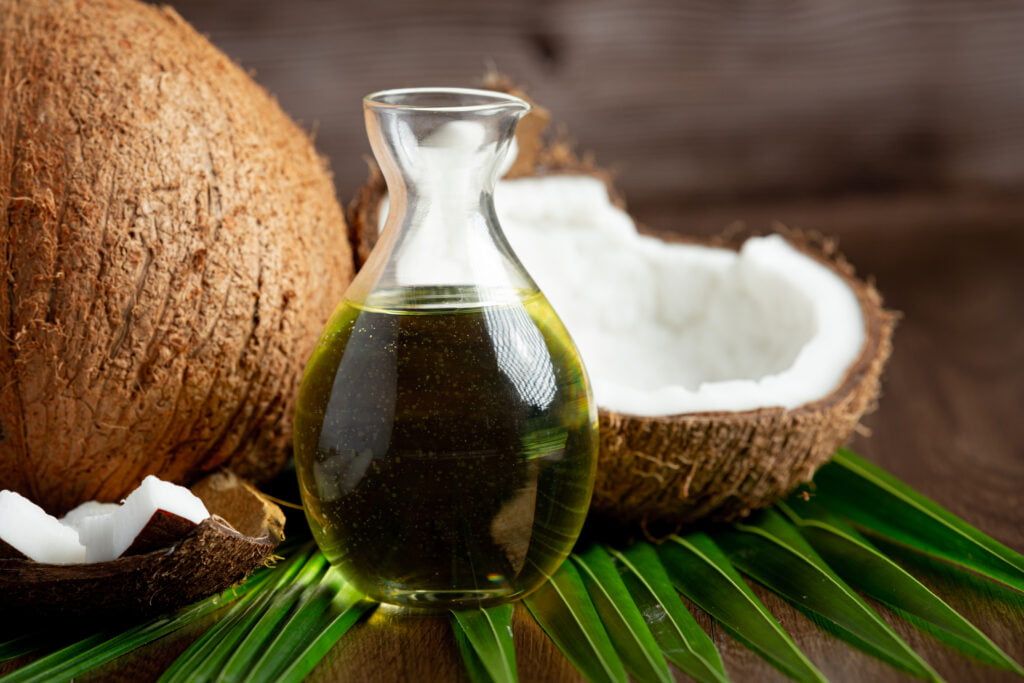
- Aloe Vera: Extract the gel from an aloe vera leaf and apply it to your hair. It helps moisturize and condition the hair, promoting silkiness and shine.
- Coconut Oil: Massage warm coconut oil into your scalp and distribute it evenly through your hair. Leave it on for a few hours or overnight before washing it out. Coconut oil nourishes and strengthens the hair, enhancing its smoothness and softness.
- Avocado: Mash a ripe avocado and combine it with a tablespoon of olive oil. Apply the mixture to your hair and let it sit for 30 minutes before rinsing. Avocado provides deep hydration, leaving your hair silky and manageable.
DIY Hair Masks and Treatments:
- Honey and Banana Mask: Mash a ripe banana and mix it with a tablespoon of honey. Apply this mask to your hair and leave it on for 20-30 minutes before rinsing. This combination helps moisturize and add shine to your hair.
- Yogurt and Egg Mask: Beat an egg and mix it with half a cup of plain yogurt. Apply the mixture to your hair, focusing on the ends. Leave it on for 15-20 minutes before rinsing. This mask nourishes and conditions the hair, promoting silkiness.
- Olive Oil and Egg Treatment: Whisk an egg and add two tablespoons of olive oil. Apply the mixture to your hair and scalp, allowing it to sit for 30 minutes before washing it out. This treatment adds moisture and improves the overall texture of your hair.
💡 Tips for Safe and Effective Home Remedies:
- Perform a patch test before trying any new ingredient to ensure you’re not allergic or sensitive to it.
- Use high-quality, natural ingredients for the best results.
- Follow the instructions and recommended durations for each home remedy or treatment.
- Rinse your hair thoroughly after using home remedies to prevent any residue buildup.
- Consistency is key. Incorporate these remedies into your hair care routine regularly for long-term benefits
Home remedies offer a natural and cost-effective way to enhance the silkiness of your hair. Experiment with these ingredients and treatments to find the ones that work best for you, and enjoy the transformative effects of these safe and effective DIY solutions.
Handling Common Hair Problems
Common hair problems can hinder the journey towards silky hair. Let’s explore effective techniques to tackle these challenges:
Frizz Control Techniques:
- Use a sulfate-free shampoo and conditioner specifically formulated for controlling frizz.
- Avoid over-washing your hair, as it can strip away natural oils and contribute to frizz. Opt for washing every other day or as needed.
- Apply a smoothing serum or anti-frizz product to damp hair before styling. This helps seal the cuticles and prevent frizz.
- Use a wide-toothed comb or your fingers to detangle wet hair gently. Avoid brushing vigorously, as it can cause frizz and breakage.
- opt for hairstyles that minimize friction and rubbing, such as loose braids or updos. This reduces the chances of frizz formation.
Managing Dry and Damaged Hair
- Incorporate a deep conditioning treatment into your hair care routine at least once a week. Choose a product that targets dryness and provides intense hydration.
- Minimize heat styling and protect your hair with a heat protectant spray when using hot tools.
- Trim your hair regularly to get rid of split ends and prevent further damage.
- Avoid harsh chemical treatments and excessive use of hair dye or bleach, as they can contribute to dryness and damage.
- Protect your hair from environmental stressors, such as sun exposure and chlorine, by wearing a hat or using protective products.
Dealing with Oily Scalp and Hair:
- Wash your hair regularly to remove excess oil and build-up. Use a clarifying shampoo specifically formulated for oily hair.
- Avoid over-conditioning your hair, as it can weigh it down and contribute to oiliness. Focus conditioner application on the ends of your hair.
- Use dry shampoo between washes to absorb excess oil and extend the time between washes.
- Avoid touching your hair frequently, as it can transfer oils from your hands to your hair.
- Choose hairstyles that keep your hair away from your face, as oil from your scalp can transfer to your skin, causing breakouts.
By implementing these techniques, you can effectively address common hair problems and pave the way towards silky, healthy-looking hair. Embrace the challenges and discover the solutions that work best for your specific needs and hair type.
Selecting the Right Hair Products
Selecting the right hair products is essential for maintaining silky hair. Let’s explore the key aspects of understanding product labels, choosing shampoos and conditioners for your hair type, and exploring additional hair care products like serums, oils, and leave-in conditioners:
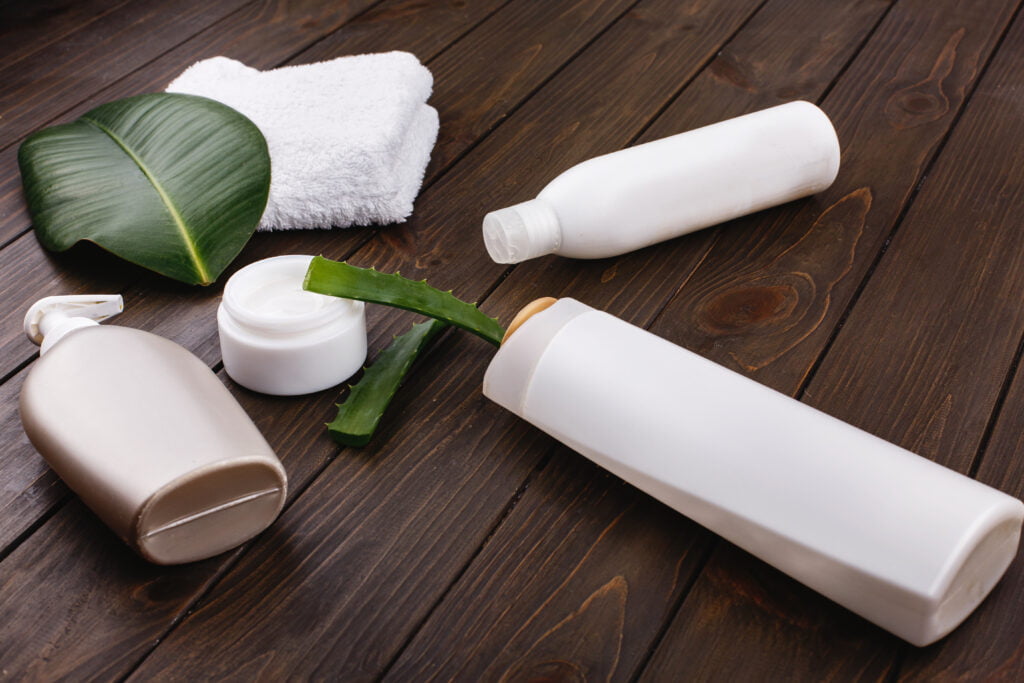
Choosing Shampoos and Conditioners for Your Hair Type:
- Straight Hair: Look for lightweight, volumizing shampoos and conditioners that add body without weighing down your hair. Avoid heavy formulations that can make straight hair appear limp.
- Wavy Hair: Opt for products that enhance the natural wave pattern and provide moisture. Look for shampoos and conditioners that offer frizz control and define waves without weighing them down.
- Curly Hair: Choose moisturizing shampoos and conditioners that provide hydration and promote curl definition. Look for products specifically designed to enhance curls and reduce frizz.
- Coily Hair: Select deeply moisturizing and nourishing shampoos and conditioners that help retain moisture in tight coils. Look for products that provide intense hydration and assist in detangling.
Exploring Additional Hair Care Products (Serums, Oils, Leave-In Conditioners):
- Serums: Hair serums are lightweight, silicone-based products that help smooth the hair, control frizz, and add shine. They can be applied to damp or dry hair and are particularly useful for taming flyaways and adding a polished finish.
- Oils: Natural oils like argan oil, coconut oil, and jojoba oil can provide deep nourishment, moisture, and shine to the hair. Use a small amount on the ends of your hair to combat dryness and add a silky feel.
- Leave-In Conditioners: Leave-in conditioners are designed to be applied after washing and conditioning the hair, and they provide ongoing hydration and detangling benefits. Look for leave-in conditioners that suit your hair type and address specific concerns like frizz control or heat protection.
By understanding product labels, selecting shampoos and conditioners tailored to your hair type, and exploring additional hair care products like serums, oils, and leave-in conditioners, you can create a customized hair care routine that supports and enhances the silkiness of your hair.
Protecting Your Hair from Damage
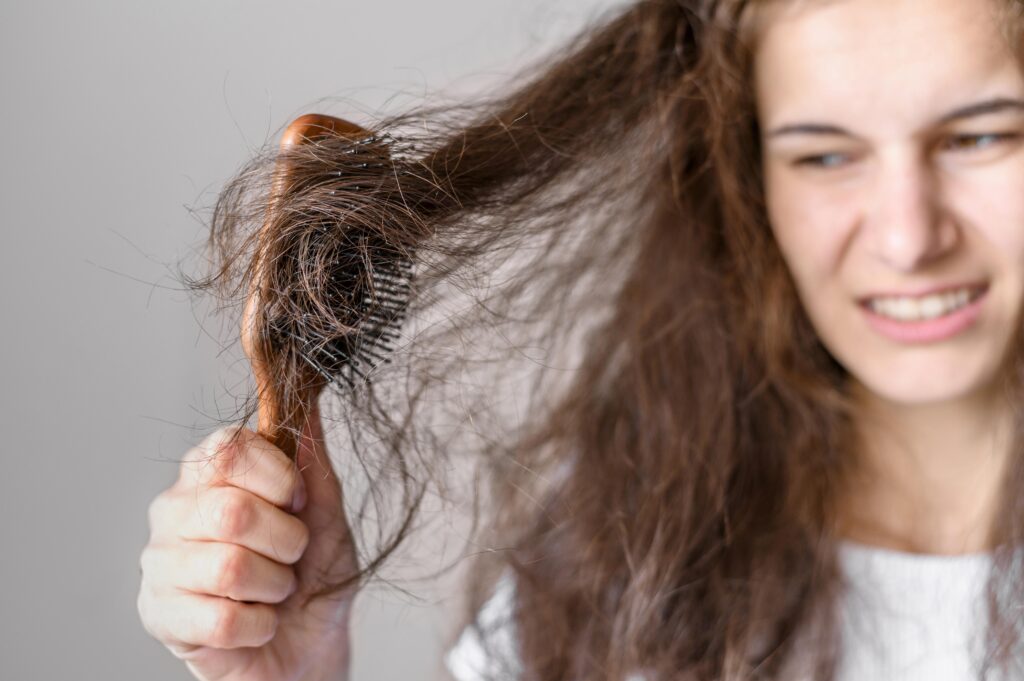
Protecting your hair from damage is crucial in maintaining its silkiness. Let’s explore effective techniques for preventing heat damage, minimizing chemical damage, and reducing environmental damage:
Preventing Heat Damage:
- Use heat styling tools sparingly. When possible, embrace natural hairstyles to minimize heat exposure.
- Apply a heat protectant spray or serum before using hot tools to create a barrier between your hair and the heat source.
- Adjust heat settings to the lowest effective temperature and avoid using excessive heat.
- Limit the frequency of heat styling and give your hair regular breaks to recover and regain its natural strength.
Minimizing Chemical Damage:
- Choose hair care products that are gentle and formulated for your specific hair type. Avoid products containing harsh chemicals like sulfates, parabens, and ammonia.
- Limit or avoid chemical treatments like perming, relaxing, or coloring, especially if your hair is already damaged or fragile.
- If you choose to color or chemically treat your hair, opt for professional services and consult with a stylist who specializes in gentle techniques and uses high-quality products.
- Prioritize proper hair care and deep conditioning treatments to restore and maintain the health of chemically treated hair.
Reducing Environmental Damage:
- Protect your hair from harmful UV rays by wearing a hat or using hair products with built-in UV protection.
- Avoid prolonged exposure to chlorine and saltwater, which can strip your hair of moisture and lead to dryness and damage. Rinse your hair thoroughly after swimming and apply a leave-in conditioner or hair oil to replenish moisture.
- Shield your hair from harsh weather conditions like extreme heat, cold, wind, and humidity by wearing protective hairstyles or using scarves or head wraps.
- Regularly moisturize and condition your hair to combat the drying effects of the environment.
By implementing these protective measures, you can significantly reduce the risk of damage to your hair, helping it maintain its silkiness and overall health. Remember, prevention is key, so be mindful of the heat, chemicals, and environmental factors your hair is exposed to and take proactive steps to protect it.
Nourishing Your Hair from Within
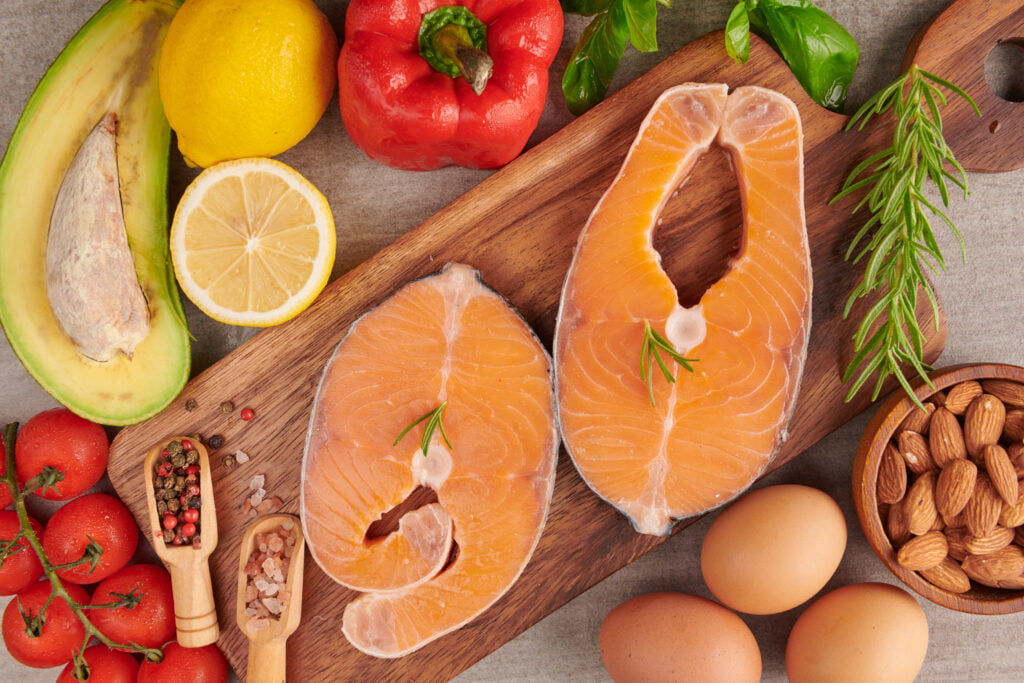
To achieve silky hair, it’s essential to nourish your hair from within by providing it with the right nutrients. Let’s explore the importance of nutrition for healthy hair, essential nutrients for silky hair, and the foods that promote hair health:
The Importance of Nutrition for Healthy Hair: Nutrition plays a vital role in maintaining the health and vitality of your hair. Just like your body, your hair needs a balanced diet to thrive. Poor nutrition can lead to dryness, brittleness, and lackluster hair. By fueling your body with the right nutrients, you can promote hair growth, enhance texture, and achieve silky locks.
Essential Nutrients for Silky Hair:
- Protein: Hair is primarily made up of a protein called keratin. Incorporating high-quality protein sources like lean meats, fish, eggs, and legumes into your diet helps strengthen the hair strands and promote their overall health and shine.
- Omega-3 Fatty Acids: Found in fatty fish, walnuts, chia seeds, and flaxseeds, omega-3 fatty acids are essential for scalp health and nourishing the hair follicles. They contribute to a healthy scalp environment, reducing dryness and promoting hair growth.
- Vitamins and Minerals: Vitamins such as vitamin A, vitamin C, biotin, and minerals like zinc and iron are crucial for healthy hair growth and maintaining the strength and luster of your locks. Incorporate foods rich in these nutrients, such as fruits, vegetables, whole grains, nuts, and seeds, into your diet.
Foods that Promote Hair Health:
- Leafy Green Vegetables: Spinach, kale, and Swiss chard are packed with vitamins A and C, which aid in the production of sebum, a natural hair conditioner.
- Berries: Blueberries, strawberries, and raspberries are rich in antioxidants that protect hair follicles from damage and promote healthy hair growth.
- Eggs: Loaded with protein and biotin, eggs provide essential nutrients for strong and silky hair.
- Nuts and Seeds: Almonds, walnuts, flaxseeds, and chia seeds contain omega-3 fatty acids, vitamin E, and zinc, promoting scalp health and nourishing the hair.
- Salmon: A great source of omega-3 fatty acids, protein, and vitamin D, salmon supports scalp health and provides essential nutrients for silky hair.
By incorporating these nutrient-rich foods into your diet, you can nourish your hair from within, promoting its health, strength, and silky texture. Remember, a balanced and varied diet is key to providing your hair with the essential nutrients it needs to thrive.
FAQ
Here are some common questions about achieving and maintaining silky hair
How often should I wash my hair?
The frequency of hair washing depends on your hair type and personal preference. Generally, washing your hair 2-3 times a week is sufficient for most people. Adjust the frequency based on your hair’s needs, considering factors like scalp oiliness, environmental conditions, and styling products used.
Can I achieve silky hair without using heat styling tools?
Yes, it is possible to achieve silky hair without relying heavily on heat styling tools. Embrace natural hairstyles, utilize gentle techniques, and incorporate effective air drying methods. By minimizing heat exposure, you can protect your hair from damage and maintain its silkiness.
Is it necessary to trim my hair regularly for silky hair?
Regular trims are beneficial for maintaining the health of your hair. Trimming helps get rid of split ends and prevents further damage. While it doesn’t directly make your hair silkier, it promotes overall hair health, which contributes to a smoother and more manageable appearance.
Are there any specific hairstyles that help in maintaining silky hair?
Hairstyles that minimize friction and rubbing can help maintain silky hair. Loose braids, buns, or updos are good options. Avoid tight hairstyles that pull on the hair, as they can cause breakage and frizz.
Can I make my hair silky if I have naturally curly hair?
Absolutely! While naturally curly hair has its unique texture, you can still achieve silky results. Proper hydration, moisture retention, and using curl-enhancing products designed for your hair type can help you achieve smooth and well-defined curls, contributing to a silky appearance.
How long does it take to see results in hair texture improvement?
The time required to see improvement in hair texture varies from person to person. Consistency is key. With a dedicated hair care routine and proper techniques, you may start noticing positive changes in a few weeks to a couple of months. Patience and persistence are essential.
Are there any side effects of salon treatments for silky hair?
Some salon treatments, like chemical straightening or keratin treatments, may temporarily change the structure of your hair. It’s essential to consult with a professional stylist, understand the process and potential risks, and ensure the treatment is suitable for your hair type and condition.
What should I do if my hair feels greasy even after washing?
If your hair feels greasy even after washing, make sure you are using a gentle shampoo suitable for your hair type. Avoid overwashing, as it can strip away natural oils, leading to excessive oil production. Consider using dry shampoo between washes and focus conditioner application on the ends of your hair.
Can diet alone make my hair silky, or do I need external products as well?
Diet plays a significant role in promoting hair health, but external products also contribute to achieving silky hair. A balanced diet rich in essential nutrients is crucial, but using suitable hair care products, deep conditioning treatments, and protective techniques are necessary for optimal results.
Is it possible to have silky hair with a tight budget?
Yes, achieving silky hair doesn’t necessarily require expensive products or treatments. Focus on maintaining a consistent hair care routine, utilizing cost-effective natural remedies, and choosing affordable hair care products that suit your hair type. With dedication and smart choices, you can achieve silky hair on a tight budget.
💡 key points
- To maintain good hair, follow a routine of oil massages, conditioning, and trimming.
- Eat a balanced diet rich in vitamins, healthy fats, proteins, and minerals.
- Minimize heat styling and harsh chemical products to prevent damage and split ends.
- Utilize natural ingredients like aloe Vera, curd, coconut oil, and onion juice for silky, long, and soft hair.










[…] How to Make Your Hair Silky: Expert Tips […]
[…] How to Make Your Hair Silky: Expert Tips […]
[…] How to Make Your Hair Silky: Expert Tips […]
[…] How to Make Your Hair Silky: Expert Tips […]